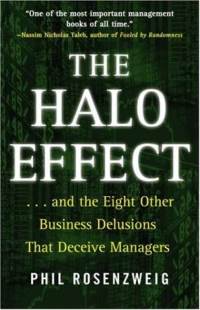In his 2007 book "The Halo Effect and the Eight Other Business Delusions That Deceive Managers" (available here)," IMD Professor Phil Rosenzweig talks about something he calls "the delusion of single explanations":
Many studies show that a particular factor ... leads to improved performance. But since many of these factors are highly correlated, the effect of each one is usually less than suggested.
A recent conversation reminded me, once again, that this delusion is common in our industry. The conversation was with a producer and went something like this (names have been omitted to protect the guilty) ...
US: "We like the rough cut but think the spot really needs an additional perspective. We were thinking a great way to do that would be to add testimonials."
PRODUCER: "Go watch [big hit of the year in same category]. You won't see a single testimonial."
A variation of this is to say, when someone points out that a Tried & True Technique is missing from a spot, "Well, [big hit] didn't have [missing technique], and it was a huge success."
In a 2006 article on this topic, Prof. Rosenzweig comes up with a clever way of showing why this way of thinking is obviously flawed:
A particularly striking example of poor thinking can be found in the June 19, 2006, edition of Fortune magazine ... That edition featured the second in a series called “Secrets of Greatness,” which is typical of a time-honored approach in business reporting: to highlight a successful company and explain what led to its success ...
According to Fortune, Sony’s success is testimony to the need for openness (emphasis mine) — both internally and externally. That’s said to be the key to greatness at Sony, and of course it all makes good sense ...
According to Fortune, Motorola’s great triumph is illustrative of another business legend: the bunch of bright people who barricade themselves against outside influences and, against all odds, emerge with a brilliant idea [the RAZR] ... Not only did the RAZR team shield itself from distractions elsewhere in Motorola, it also pursued its vision with single-minded determination (emphasis mine). Did the engineers go out and talk with customers? Not at all. The team deliberately ignored conventional wisdom from market research ...
[A]s you’ve probably spotted by now, the lessons from Motorola are exactly the opposite of the lessons from Sony.
(The full article is here and well worth the read.)
In our industry, marketers look at a ranking such as the Jordan Whitney, IMS or True Top 50 and make the same mistake. At least now we have a name for it.
